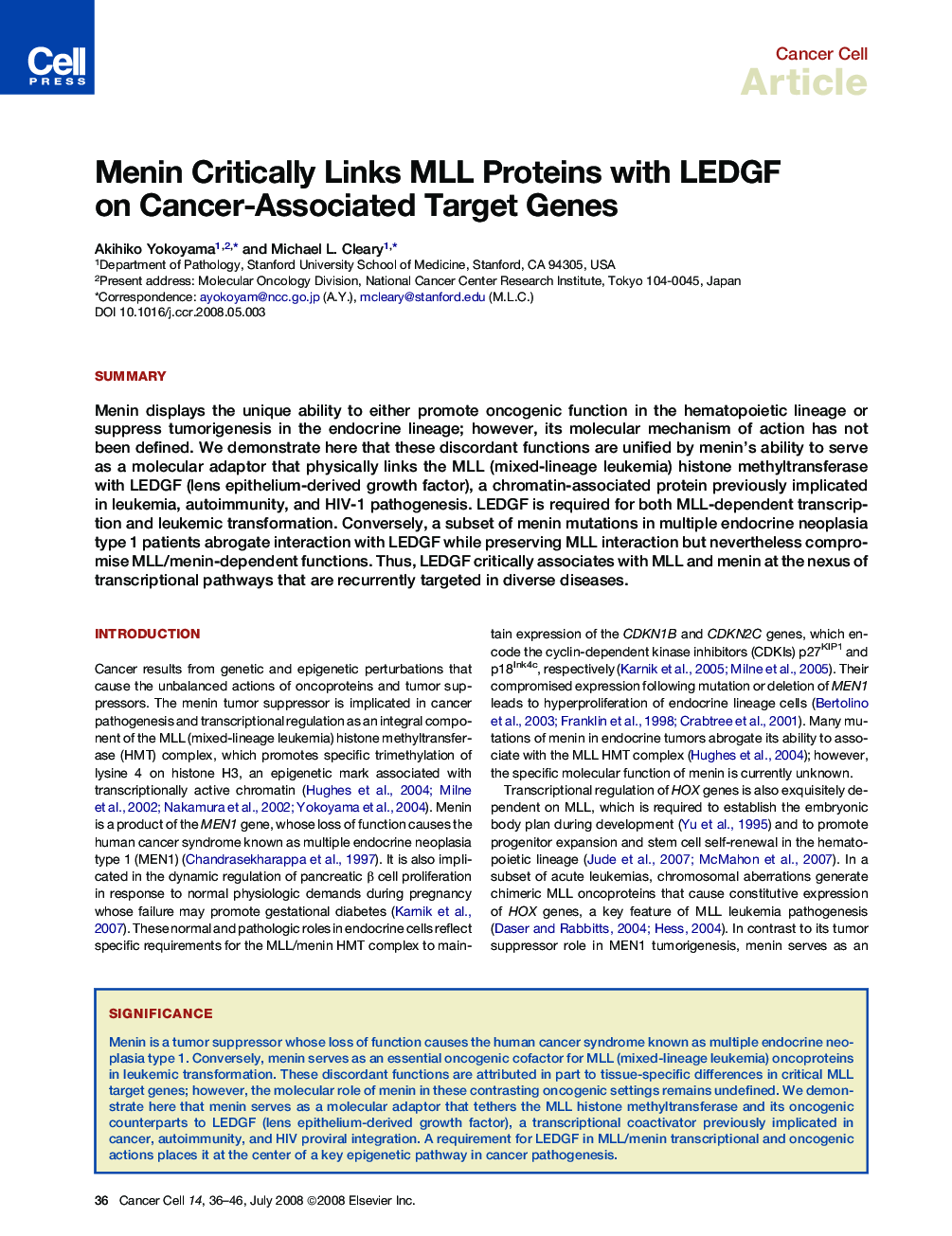| Article ID | Journal | Published Year | Pages | File Type |
|---|---|---|---|---|
| 2108405 | Cancer Cell | 2008 | 11 Pages |
SummaryMenin displays the unique ability to either promote oncogenic function in the hematopoietic lineage or suppress tumorigenesis in the endocrine lineage; however, its molecular mechanism of action has not been defined. We demonstrate here that these discordant functions are unified by menin's ability to serve as a molecular adaptor that physically links the MLL (mixed-lineage leukemia) histone methyltransferase with LEDGF (lens epithelium-derived growth factor), a chromatin-associated protein previously implicated in leukemia, autoimmunity, and HIV-1 pathogenesis. LEDGF is required for both MLL-dependent transcription and leukemic transformation. Conversely, a subset of menin mutations in multiple endocrine neoplasia type 1 patients abrogate interaction with LEDGF while preserving MLL interaction but nevertheless compromise MLL/menin-dependent functions. Thus, LEDGF critically associates with MLL and menin at the nexus of transcriptional pathways that are recurrently targeted in diverse diseases.
